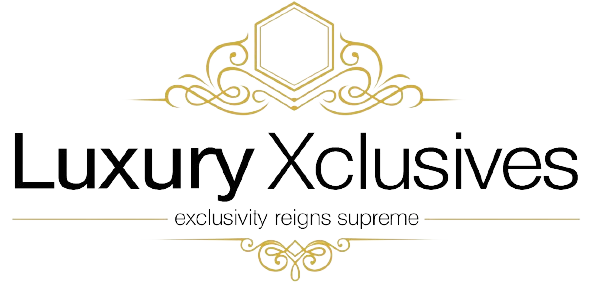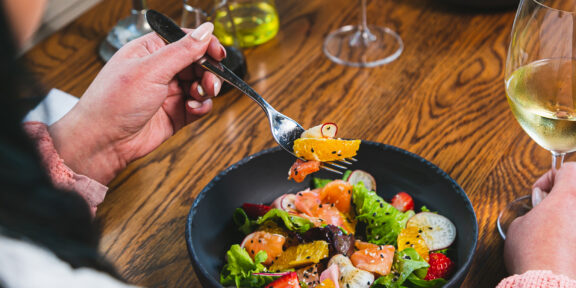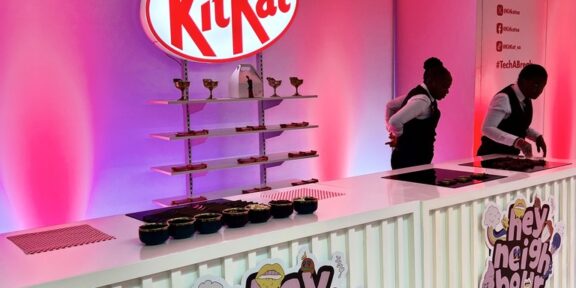Never have we needed more of a reason to celebrate. As the end of the year rolls around once again, planning for fêtes gets underway and the advent of family gatherings draw near, we dare to plan suitably festive events to see the year out in style. Whether that’s an intimate party made up of just immediate family and your nearest and dearest, or a more extravagant soiree to mark the occasion and look back on the year, and forward to the next. For such occasions, champagne is the ultimate festive accessory – and the special occasion limited-edition bottles that look good as well as offer the ultimate in drinking enjoyment do double duty as decor and thoughtful gifting.
The classic festive accessory
Trio of Moët Impérial, Impérial Nectar, Impérial Rosé
The annual limited edition gift bottles and boxes by Moët & Chandon are always awaited with anticipation. Fun, festive, and iconic, Impérial is also the house’s signature champagne, created in 1869 to embody a seductive palate and elegant maturity. Always in style, it’s a timeless classic, made continuously modern with its annual limited-edition incarnations. This season, a fresh and much-needed uplifting take on these stalwarts of the champagne house will adorn a lunch table, outdoor picnic or sundowner session with optimism and whimsy.
Available from: Moët Impérial R595; Moët Impérial Nectar R695; Moët Impérial Rosé R795
The nostalgic memory maker
Veuve Clicquot Yellow Label Radiating Retro
We’re all feeling a little nostalgic these days, prompting the occasional wistful look back to more carefree times. And like many excellent designs of the present, the Veuve Clicquot Radiating Retro special edition pays homage to the past with a sophisticated, geometric design. Inspired by wallpaper of the 1960s, it offers a dose of vintage chic with its on-trend nod to the era. But while it’s designed in celebration of the past, it’ll be best put to toasting to the future. Fun, irreverent, with a dose of good old-fashioned fun, it’ll pair well with your 60s (and 70s, 80s, 90s and noughties) playlists.
Available from R649
The sustainable centrepiece
Ruinart Blanc de Blanc
Ruinart’s move to replace gift boxes with a chic recyclable ‘Second Skin’ made from pulped paper (a process that reflects two years of research and development alongside English paper manufacturer James Cropper and Italian packaging specialists Pusterla 1880) has resulted in a case that mimics the curves of the bottle, while protecting it from light and moisture. Sculptural and minimal, it’s also luxurious – the surface evokes the walls of the Crayères de Reims, the ancient chalk quarries and natural wine cellars where Maison Ruinart champagnes age. In addition, new packaging is extraordinarily eco-friendly – with a carbon footprint reduced by 60%. If you’re looking for an eco-friendly festive centrepiece, this is it.
Available from R1195
The cork-popping pièce de résistance
Dom Pérignon Lady Gaga Limited Edition Blanc 2010 Vintage
Dom Perignon’s mission to create harmony that inspires emotion is the perfect complement to Lady Gaga’s musical style. And like Gaga, the pursuit of perfection involves honing a craft (or vintage) over time – patience resulting in the perfect symphony. The unique conditions offered by 2020’s harvest culminated in a wine with a full, ample presence whose character unfolds, generous and firm – before tautening around vibrant, spicy notes and a salty finish. The special Dom Pérignon Lady Gaga Limited Edition Blanc 2010 Vintage embodies principles upheld by both the music icon and the Maison – creative freedom in the form of self-knowledge, hard work, reinvention and inspiration. This magnificent intersection between art and lifestyle epitomises the champagne house’s sense of luxury and prestige, and serves as a perfectly fitting accoutrement to a special occasion. Choose this statement bottle to pop at midnight and see the new year in.
Available from R3295
Notes to editors, on champagnes:
There are several fundamentals that swiftly increase your knowledge of Champagne and most importantly give you the ability to understand what you should be selecting:
Region: Champagne is a region of 34,000 hectares roughly 150km North East of Paris. The vineyards in the region are referred to as Crus and are mostly named after the closest village, such as Ay, Bouzy Cramant and Verzy. Each vineyard has a quality rating for the grapes from the respective vineyard.
Grapes: Champagne can only be produced from three Grape varieties the majority of Champagne houses blend all three as they balance extremely well. Chardonnay the white flesh and white skin grape know for elegance. 100% Chardonnay based Champagnes are called Blanc des Blancs. The French translation of Blanc is White, so Blanc de Blancs is “White from whites”. The Pinot Noir and Pinot Meunier grapes have black skins and white flesh. Grapes made from 100% of these grape varietals are referred to as Blanc des Noirs, translates as “White from Blacks”. The vast majority of Champagnes blend all three grapes due the winemaking abilities in bringing out the best qualities of each grape varietal.
Vintage VS Non-Vintage: Non-Vintage Champagnes are comprised of grapes harvested across multiple years. If you are looking for consistency Non-Vintage offers this as the winemaker is able to blend many vintages and many reserve wines to deliver a consistent Champagne each and every year. Vintage Champagne can only be made from grapes harvested in one particular year. Vintage Champagnes must spend a minimum of 3 years ageing on the lees. The ideology of vintage Champagne is the ability for the winemaker to tell the unique story of the year and vintage through the Champagne.
Dosage: Dosage refers to the small amount of liquid, usually sweet added to a Champagne to balance it out. Depending on the dosage added, you’ll end up with a variety of Champagnes defined by terms that represent a scale from sweetest to driest: Doux: 50 or more grams of sugar added per litre, Demi-Sec: Dosed with 32 to 50 grams of sugar, Sec: “Sec,” in French, means dry. But dry here actually indicates a medium-sweet sparkling. 17 to 32 grams of sugar, on average a teaspoon per litre. Extra Sec: Literally “Extra Dry,” 12 to 17 grams of sugar.
Brut: Up to 12 grams of sugar added, really for balance. Slightly rounder than “Extra Brut” because of the increased added sugar, and the type of sparkling or Champagne we tend to drink most. Extra Brut: With fewer than 6 grams of sugar added, this will not mask acidity and accentuate the carbonation.
Rosé Champagnes:
The beautiful hues you find in Rose Champagne can come from two separate sources or a combination of both:
Leaving the juice of red grapes to macerate on their skins for a brief time to extract pigments (natural red colouring).
By the addition of a small percentage of red wine- from the Champagne region – during blending.
The dosage of Rose like all Champagnes can vary.
























